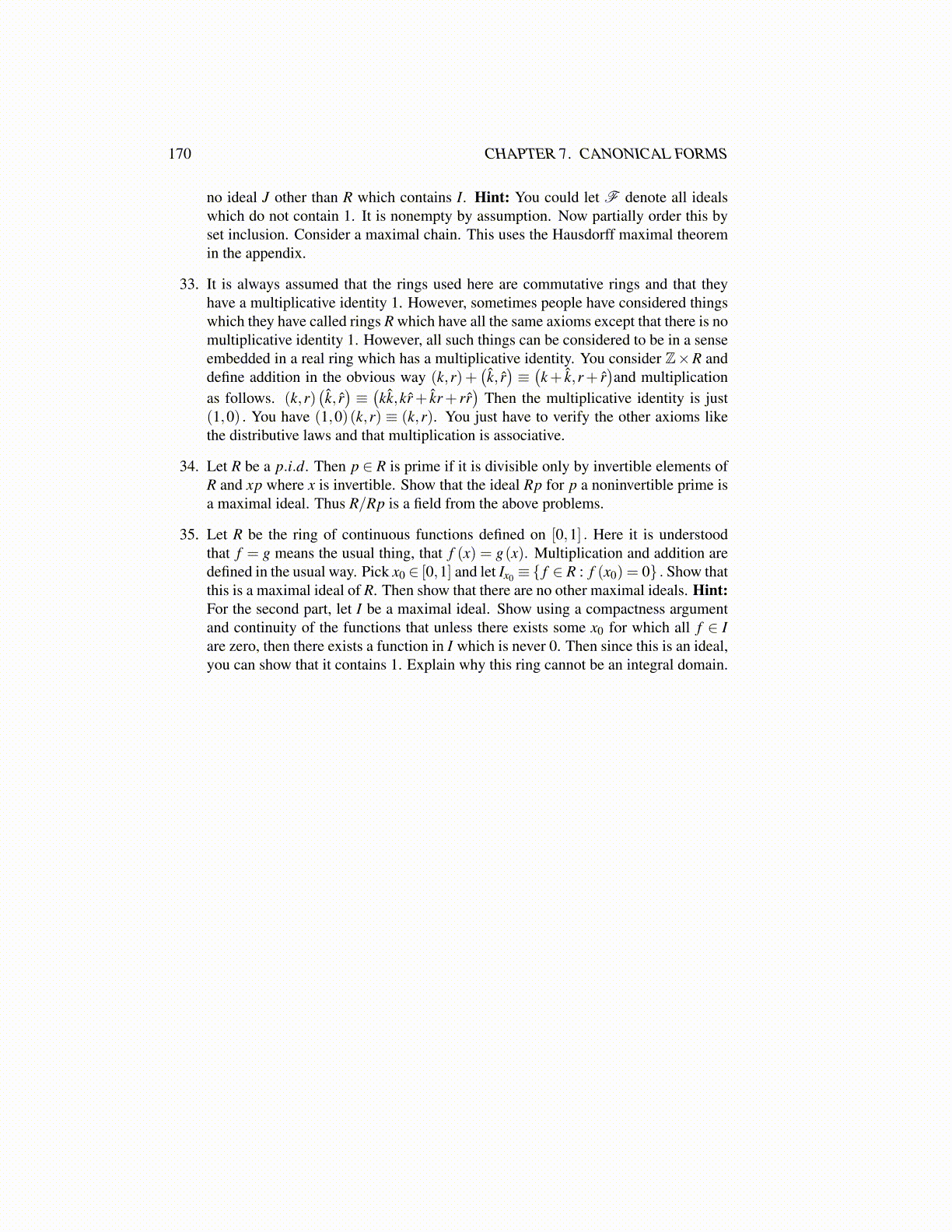
170 CHAPTER 7. CANONICAL FORMS
no ideal J other than R which contains I. Hint: You could let F denote all idealswhich do not contain 1. It is nonempty by assumption. Now partially order this byset inclusion. Consider a maximal chain. This uses the Hausdorff maximal theoremin the appendix.
33. It is always assumed that the rings used here are commutative rings and that theyhave a multiplicative identity 1. However, sometimes people have considered thingswhich they have called rings R which have all the same axioms except that there is nomultiplicative identity 1. However, all such things can be considered to be in a senseembedded in a real ring which has a multiplicative identity. You consider Z×R anddefine addition in the obvious way (k,r)+
(k̂, r̂)≡(k+ k̂,r+ r̂
)and multiplication
as follows. (k,r)(k̂, r̂)≡(kk̂,kr̂+ k̂r+ rr̂
)Then the multiplicative identity is just
(1,0) . You have (1,0)(k,r) ≡ (k,r). You just have to verify the other axioms likethe distributive laws and that multiplication is associative.
34. Let R be a p.i.d. Then p ∈ R is prime if it is divisible only by invertible elements ofR and xp where x is invertible. Show that the ideal Rp for p a noninvertible prime isa maximal ideal. Thus R/Rp is a field from the above problems.
35. Let R be the ring of continuous functions defined on [0,1] . Here it is understoodthat f = g means the usual thing, that f (x) = g(x). Multiplication and addition aredefined in the usual way. Pick x0 ∈ [0,1] and let Ix0 ≡{ f ∈ R : f (x0) = 0} . Show thatthis is a maximal ideal of R. Then show that there are no other maximal ideals. Hint:For the second part, let I be a maximal ideal. Show using a compactness argumentand continuity of the functions that unless there exists some x0 for which all f ∈ Iare zero, then there exists a function in I which is never 0. Then since this is an ideal,you can show that it contains 1. Explain why this ring cannot be an integral domain.